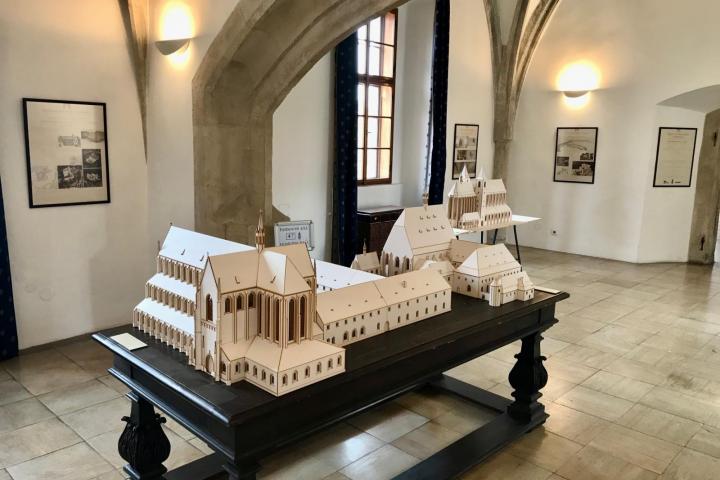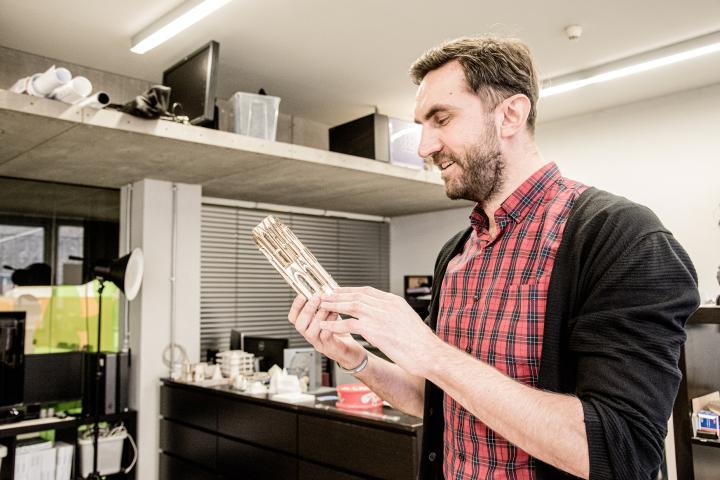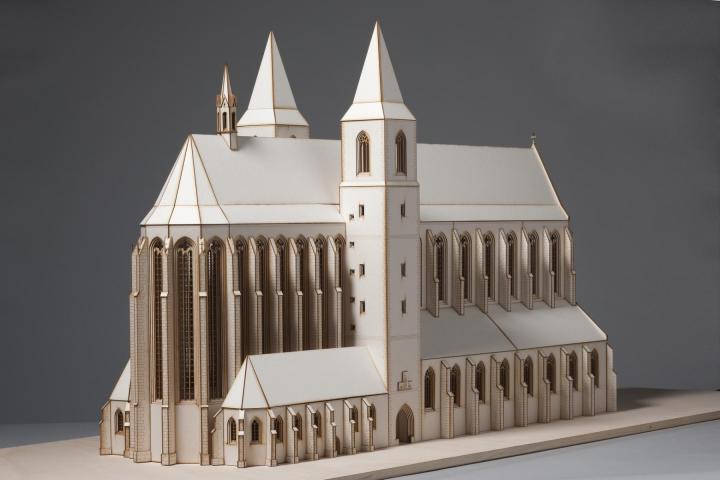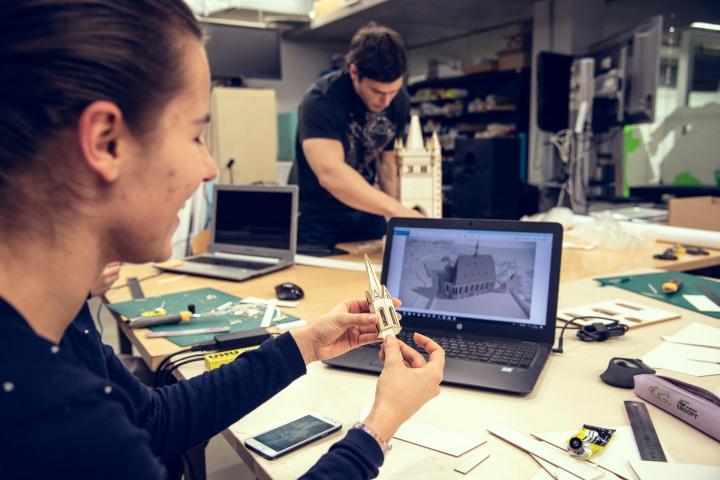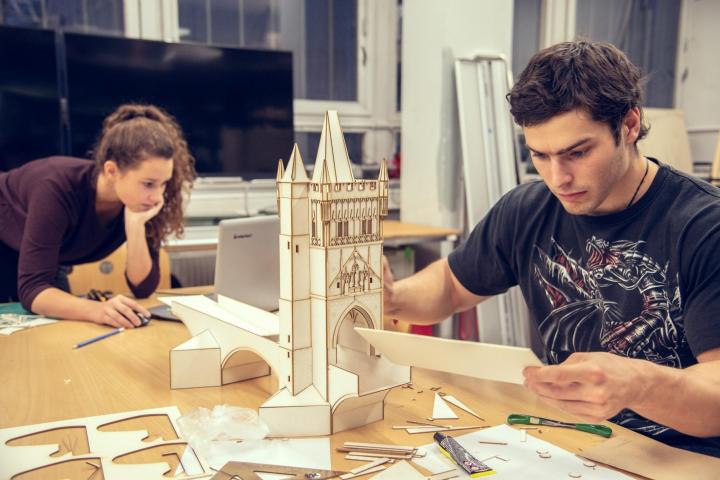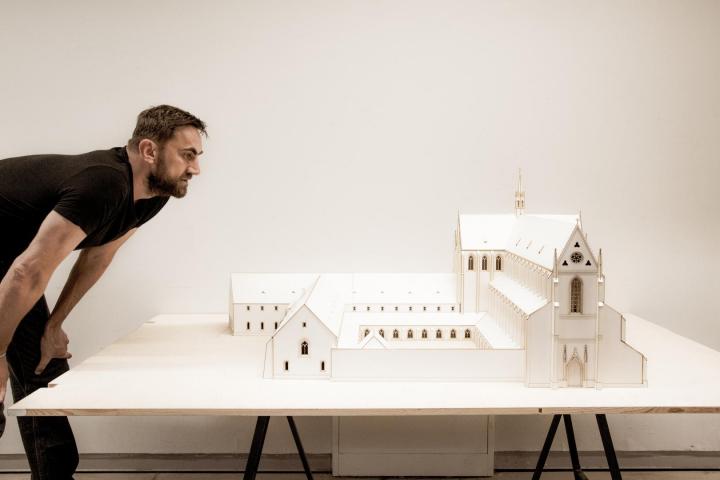
What would the Church of Our Lady of the Snows in Prague look like if it were completed? Or what form of the Old Town and New Town Hall did the people of Prague walk past in 1420? What did the Corpus Christi Chapel at the Cattle Market, which was demolished at the end of the eighteenth century, look like? Or how majestic looked the Church of the Assumption of the Virgin Mary in Zbraslav, which was one of the largest in Bohemia in the Gothic period and was destroyed during the Hussite storms? Or what did the Castle on Zderaz look like, standing on the Břežská Rock, at the lower end of which the Dancing House stands today?
"The exhibition presents 20 physical models of buildings from the High Gothic period. Although we have already exhibited some of them, there are also a number of new models, such as the Cistercian monastery and the Church of the Assumption of the Virgin Mary in Zbraslav. The models are in 1:100 scale and were worked on by students and teachers as part of the elective course Architectural Models," explains Ing. arch. Vojtěch Dvořák from the Faculty of Civil Engineering of the Czech Technical University. Prof. Mikuláš Hulec, Head of the Department of Architecture at the Faculty of Civil Engineering, CTU in Prague, appreciates the activity and interest of the students: "It is essential for students to be able to transform their 2D designs into 3D space, and it is essential for students to be able to see what beautiful and magnificent buildings our ancestors were able to build."
For example, the aforementioned Cistercian monastery and the Church of the Assumption of the Virgin Mary in Zbraslav was supposed to be the burial place of the ancient royal family of the Přemyslids according to the promise of Wenceslas II. The foundation stone of the temple was laid the day after Wenceslas was crowned King of Bohemia on 3 June 1297. In the Gothic period, this monastery was one of the largest in Bohemia with its monumental dimensions. Its total length was more than 100 metres. In contrast, the preserved church of Sedlec measures "only" 95 metres and the width of the four naves was 30 metres. During the Hussite revolts and unrests, however, the church was destroyed and only a few fragments have survived.
"The model represents only a probable form of the monastery and temple. I based it on a plan found in 1850 during the repair of the church tower in Horní Mokropsy. The credibility of the drawing, which was only a copy of an earlier drawing, was confirmed by archaeological research in the 1980s," explains Ing. arch. Vojtěch Dvořák. Just like the other models, the Zbraslav monastery is made in a scale of 1:100, the model measures approximately 105x140 centimetres and is thus one of the largest in the exhibition. A group of three students worked on its creation for about two weeks.
"Although some of the models have already been on display in Kutná Hora in previous years, at exhibitions on the anniversaries of Wenceslas IV and Wenceslas II and at the exhibition titled The Builders of Cathedrals, we are pleased that we have now managed to organise such a unique comprehensive exhibition in cooperation with the Faculty of Civil Engineering of the Czech Technical University," says Josef Kremla, director of the Czech Museum of Silver in Kutná Hora. "Kutná Hora is a town with an important history with a great emphasis on that particular period and the exhibition Czech High Gothic in Models helps to perceive our cultural heritage. The models made by students also promise us the interest in this topic among the younger generation. We also hope that in the future, in cooperation with architects from the Faculty of Civil Engineering, we will be able to produce a model of the late Gothic town hall in Kutná Hora, which burned down in 1770," adds Josef Kremla.
The most challenging phase of the preparation of the whole exposition was finding documentation for production of the models. "Finding it often looked like a detective search. For many of the buildings, there are only hints of the materials, so I was inspired by similar buildings from the same period or built by the same construction plant. However, I always tried to make the model as close to reality as possible," explains the author of the models Ing. arch. Vojtěch Dvořák. He consulted most of the models with experts, mostly from the National Heritage Institute in Prague, the Academy of Sciences of the Czech Republic and the Museum of the City of Prague, and supplemented the information with other available sources from archives and libraries.
"All the models are made of wooden cardboard cut on a laser plotter and the students and their teachers spent hundreds of hours working on them," explains modeler Ing. Michal Chalupa from the Department of Architecture at the Faculty of Civil Engineering, who together with Ing. arch. Vojtěch Dvořák prepared the exhibition conceptually. The exhibition also includes exhibition panels, which provide additional information and show, for example, the current appearance of sites and buildings.
The exhibition "Czech High Gothic in Models by Students of the Architecture and Civil Engineering Programme of the Faculty of Civil Engineering of the Czech Technical University" will take place at the Czech Museum of Silver in Kutná Hora - Hrádek from 1 April to 30 November 2022. Open daily except Mondays.
